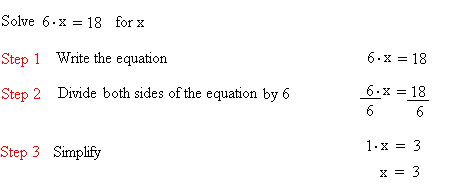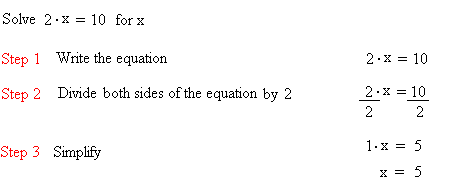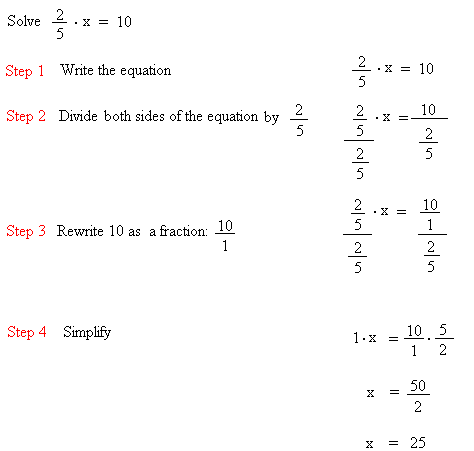Solving Multiplication Equations
When solving multiplication equations, these equations may have the form ax = c, bx = d, or cx = f, etc...Recall that ax + b = c is a linear equation.Thus, the equation ax = c is also a linear equation with b = 0.You can solve ax = c in just one step.
When solving a one-step equation of the form ax = c, just divide both sides by of the equation by a.
ax = c
(a/a)x = c/a
(1)x = c/a
x = c/a
Solving multiplication equations: Here are three examples showing how to solve these equations.
Example #1: Solve the multiplication equation 6x = 18 using division.

You could also solve 6x = 18 by multiplying both sides of the equation by the reciprocal of 6. The reciprocal of 6 is 1/6.
6x = 18
(1/6)6x = 18(1/6)
(1/6)(6/1)x = (18/1)(1/6)
[(1×6)/(6×1)]x = (18×1)/(1×6)
(6/6)x = 18/6
1x = 3
x = 3
It looks like we are doing more work when solving multiplication equations the way we did it above. True, it is more work in this case! However, it is extremely important to know this technique and in some other cases, it is less work.
Example #2: Solve the multiplication equation 2x = 10 using division.

Again, you could also solve 2x = 10 by multiplying both sides of the equation by the reciprocal of 2. The reciprocal of 2 is 1/2.
2x = 10
(1/2)2x = 10(1/2)
(1/2)(2/1)x = (10/1)(1/2)
[(1×2)/(2×1)]x = (10×1)/(1×2)
(2/2)x = 10/2
1x = 5
x = 5
Before you look at example #3, I strongly encourage you to review multiplication and division of fractions.Example #3: Solve the multiplication equation (2/5)x = 10 using division.

Now, you will see that it is easier to solve the equation (2/5)x = 10 when we multiply both sides of the equation by the reciprocal of 2/5.
The reciprocal of 2/5 is 5/2.
(5/2)(2/5)x = (5/2)10
(5/2)(2/5)x = (5/2)(10/1)
[(5×2)/(2×5)]x = (5×10)/(2×1)
(10/10)x = (50)/(2)
(1)x = 50/2
x = 25
Linear equations calculator
Easily solve equations of the form ax = c with the click of a button!